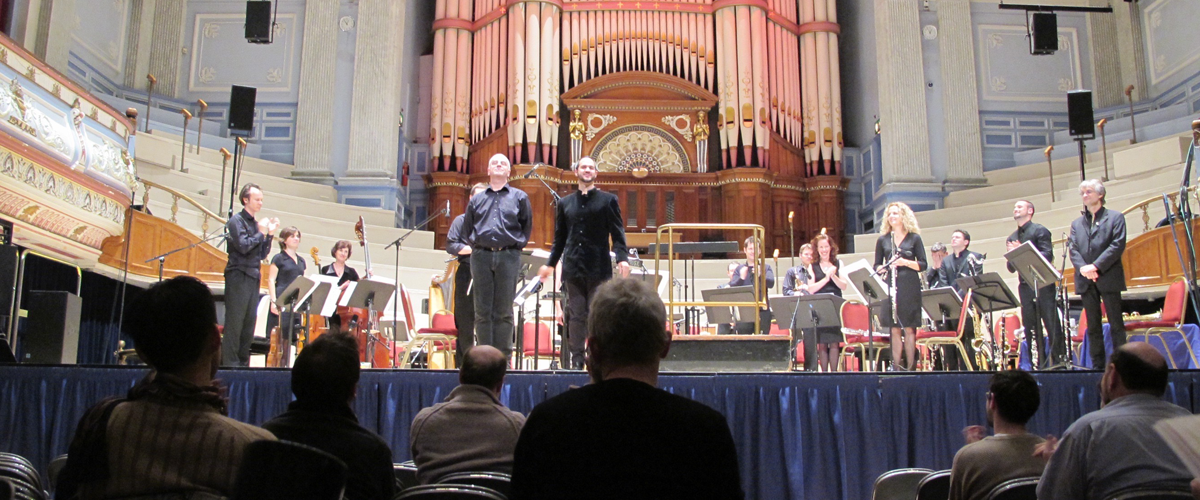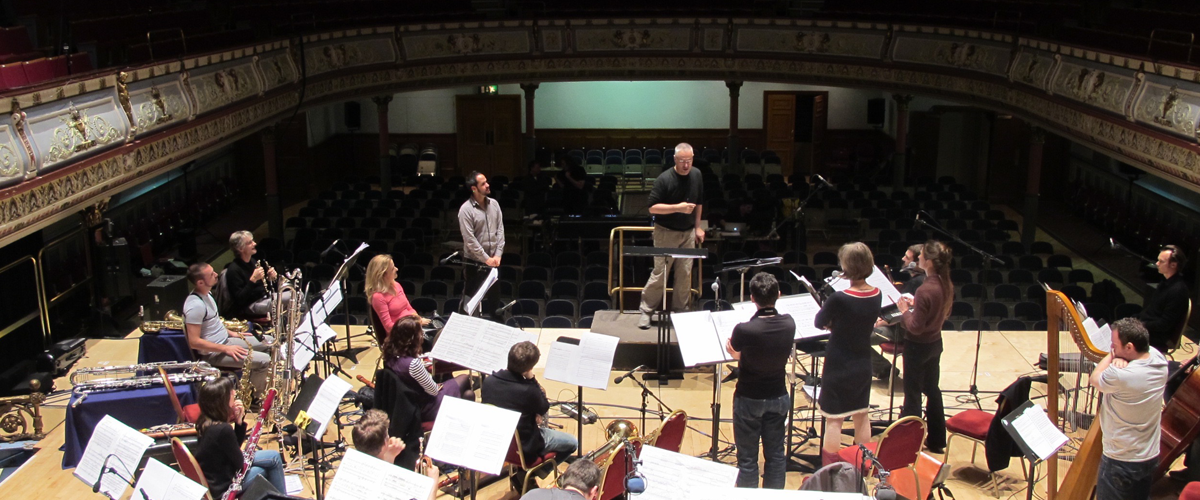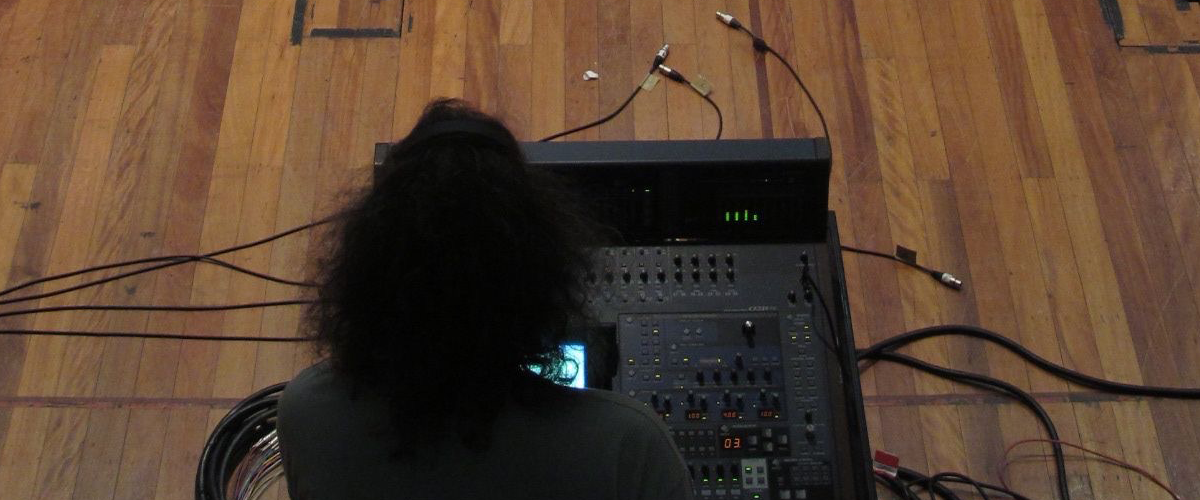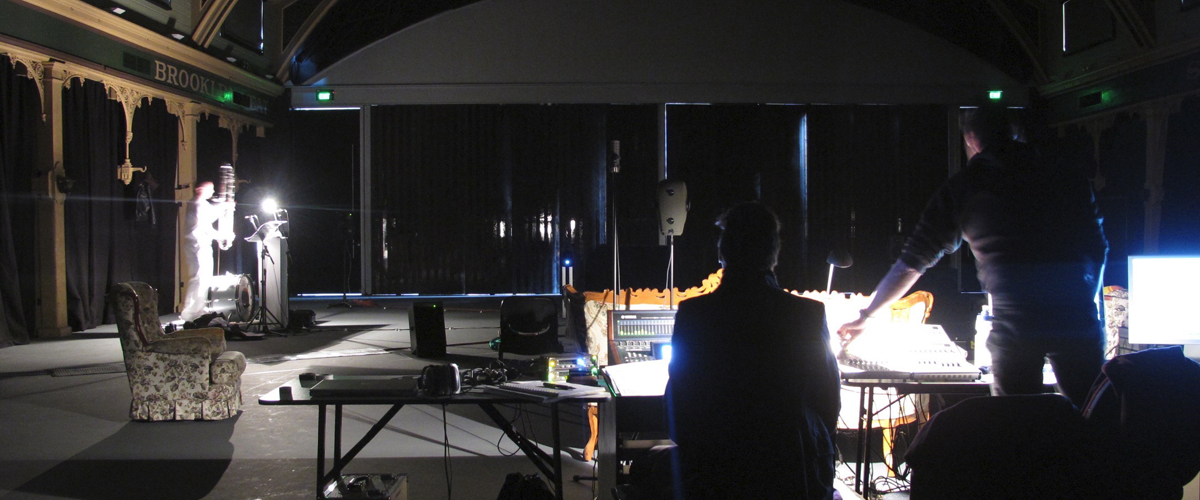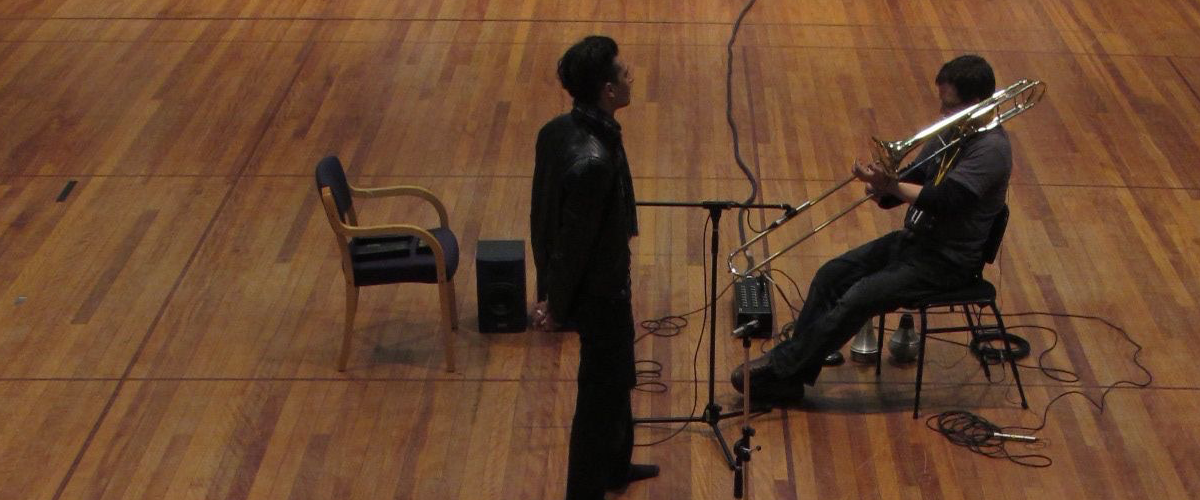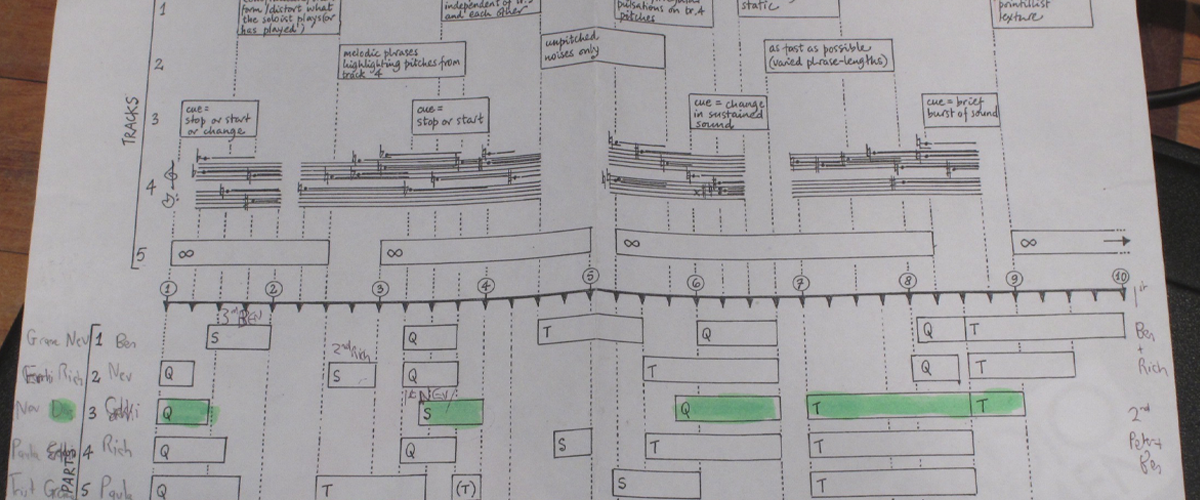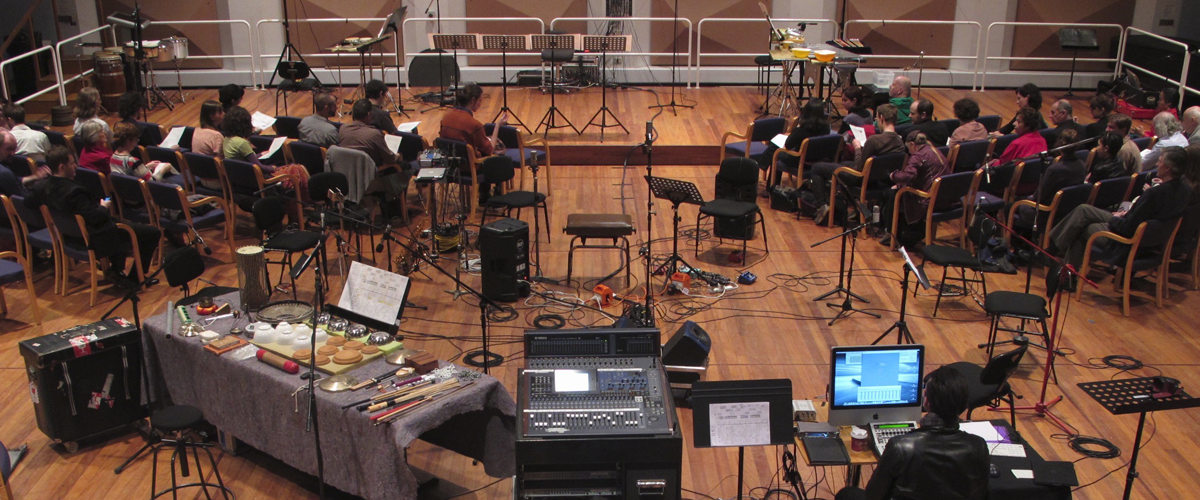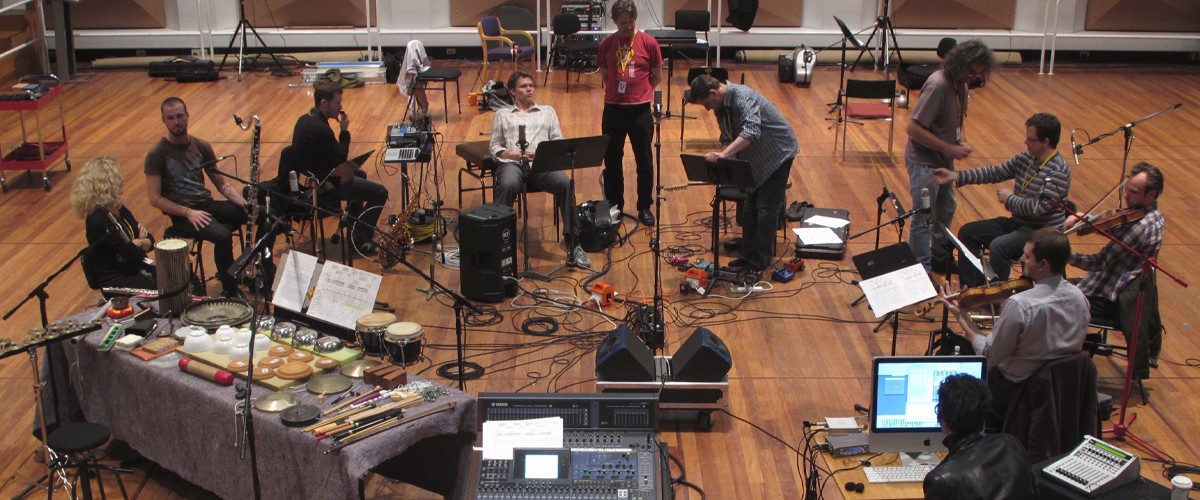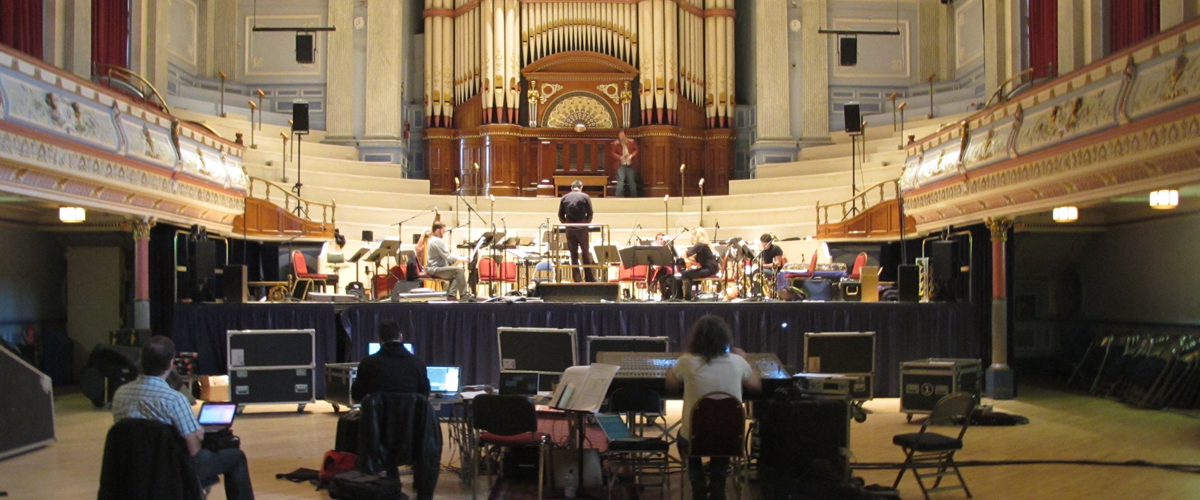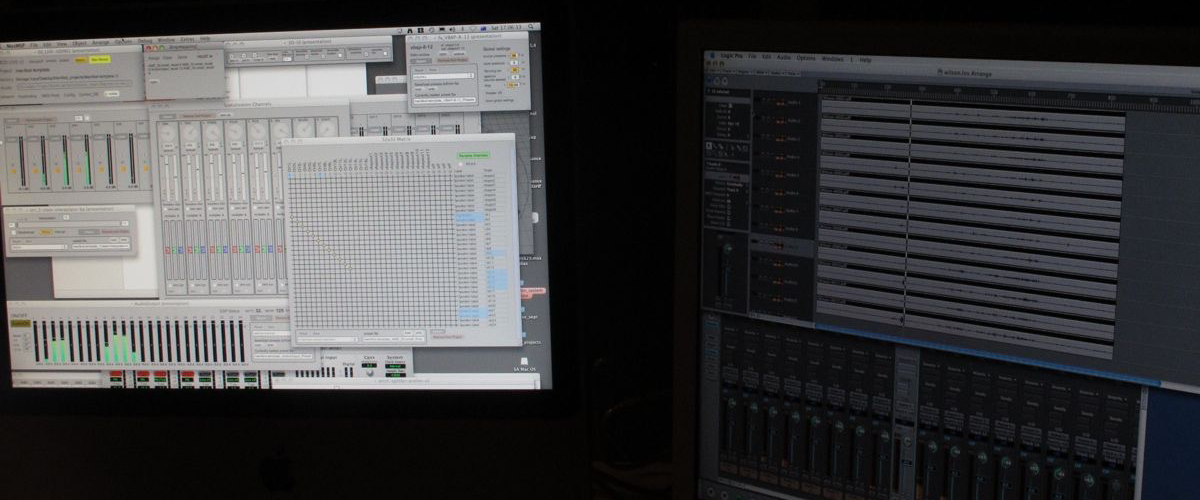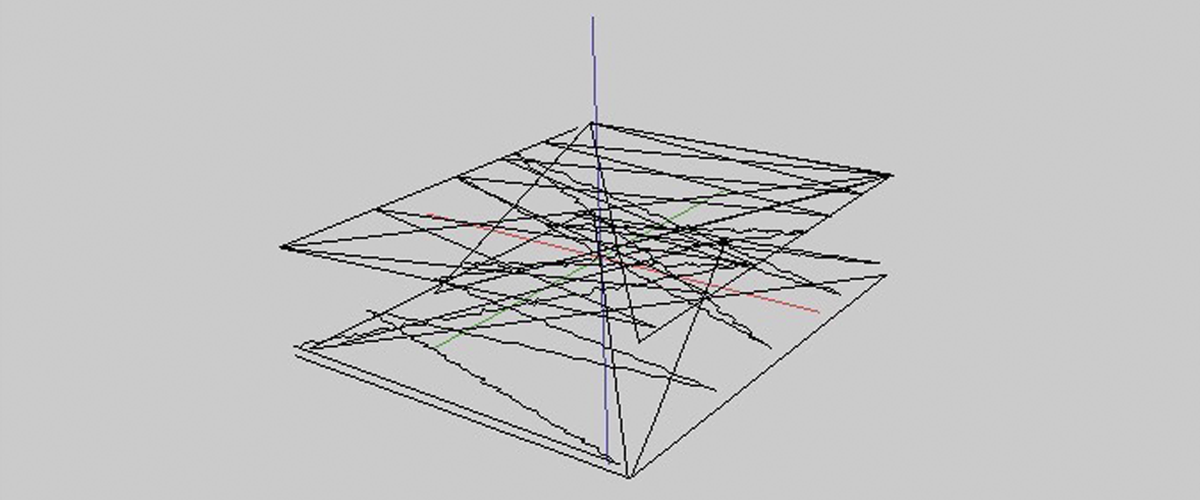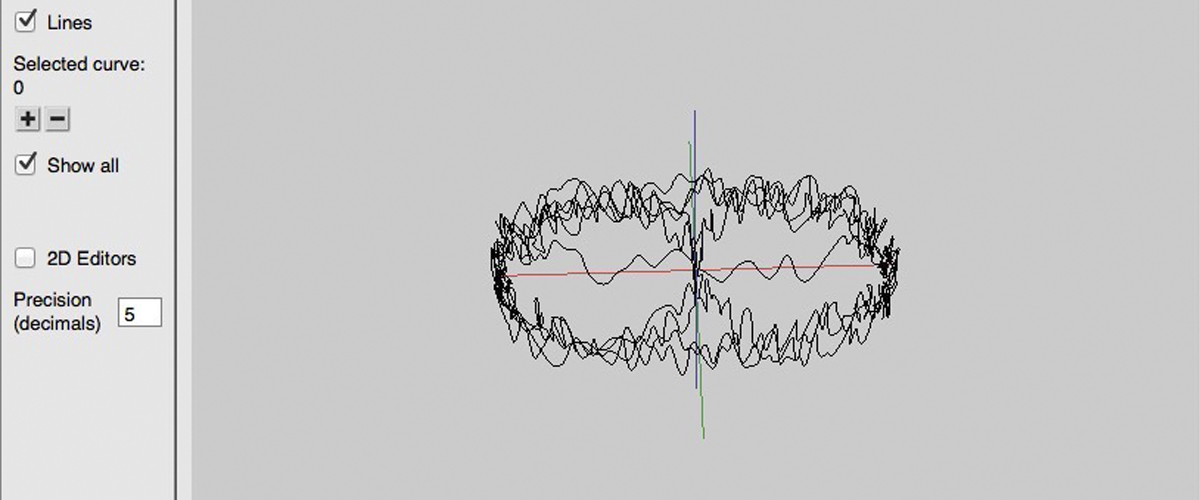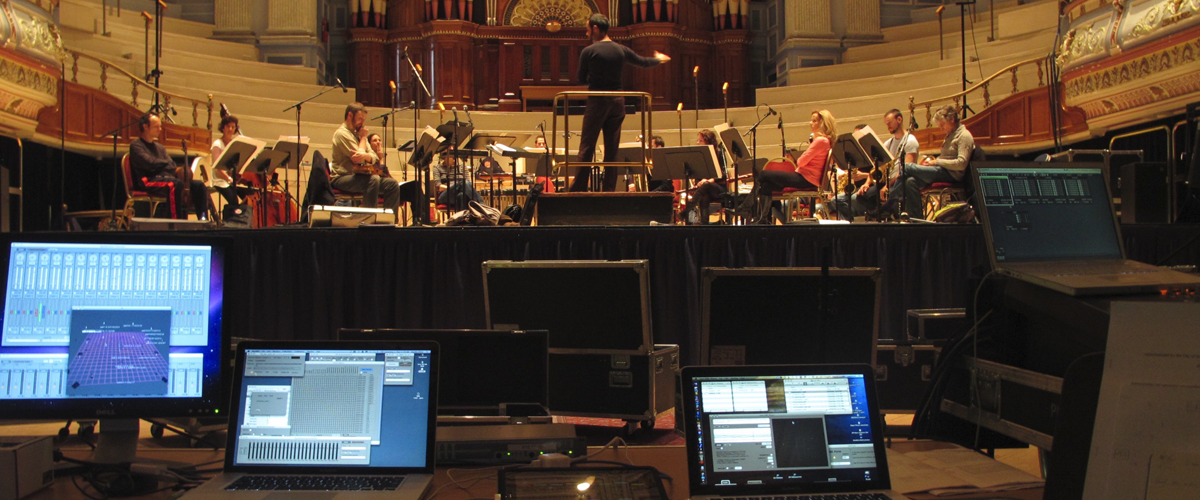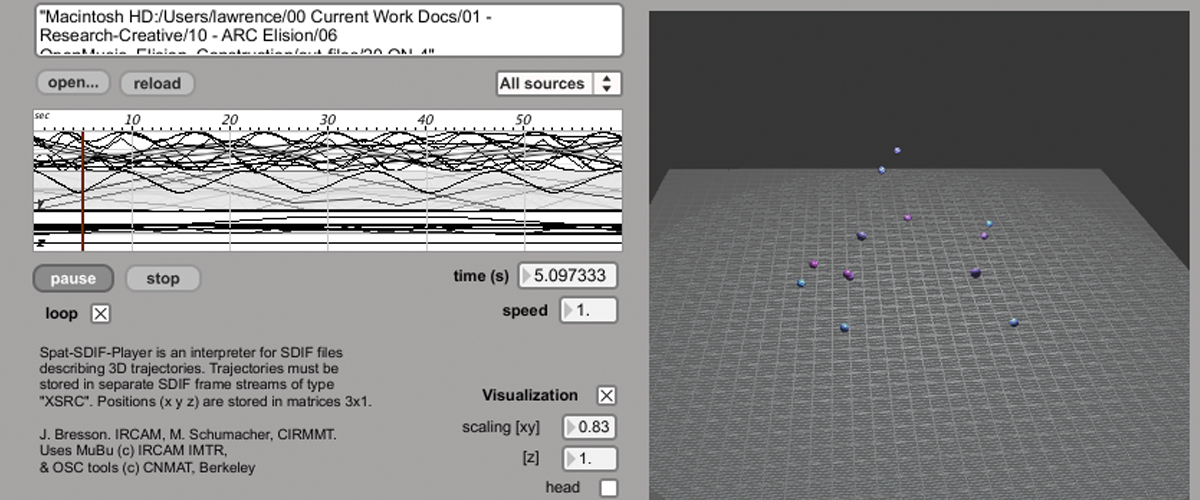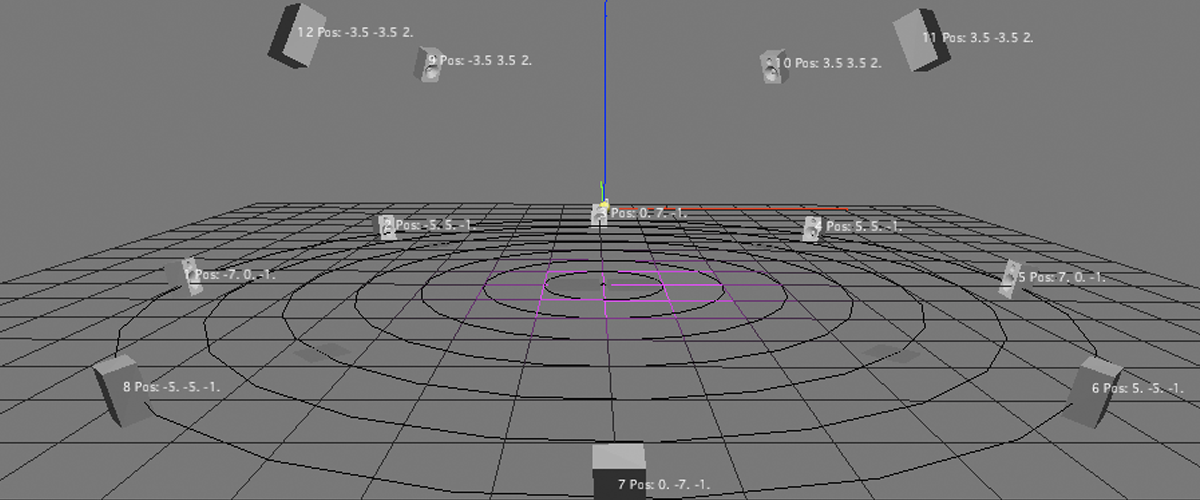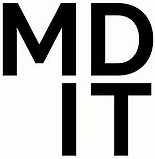Scaling instrumental resonance and morphology for spatialised performance
Project description based on original application:
Despite the recent proliferation of enabling technologies for spatial sound design, the frequency of innovative public concerts based on these technologies is low. Expanding this cultural practice requires an integrated solution accommodating all stages of creation and production of a spatial sound performance, instrument research, development of a scalable and flexible technology platform for diverse performance venues, and fostering of a research culture in contemporary performers. To fully exploit technology resources for delivering unique concerts, the project investigated diverse musical instrument resonance to integrate with new sound spatialisation strategies for public concerts.
From the final report:
Aim 1: develop a robust approach to concert production:
A new technique was developed over the project and fully tested in a Construction, a 2 hour performance in Huddersfield Contemporary Music Festival. The approach integrated spatialisation trajectories developed in OpenMusic using the OMPrisma libraries and the SPAT-DIF format, and a new spatialisation system developed in Max/MSP. The technique ensured reliable signal-data management by three spatial sound technicians.
Aim 2: link instrument resonance and morphology with spatialisation:
Through workshops, performances and practiced based research Michael Hewes’ PhD investigated a technique to capture the ‘personal sound field’ of a performer using small radio microphones placed on the performers wrists and spatialised over multi-channel systems.
Aim 3: development of research culture:
Ongoing projects in development to extend current performance system for Australian performances of Construction. Industry Partner member Daryl Buckley has commenced a PhD in SIAL Sound Studios. Practiced based research activities were found to be the richest form of research activity for ensemble members, for example workshops in SIAL Sound Studios, discussions held in and around rehearsals and performances, as opposed to the generation of purely text based research items. Strategic development on going to form a research-performance project to use SIAL Sound Studios as the Australian base for Elision’s international performance projects.
Aim 4: to produce new concert experiences for national and international audiences:
Over the course of the three year project, SIAL Sound Studios and Elision Ensemble collaborated on five concerts in Melbourne, Brisbane, London, Bremen and Huddersfield. Other individual events by the partners contributed to development of compositional material (sections of Construction) for these main concerts and technical testing of the software in concerts of electroacoustic music (see Melbourne Recital Centre concerts). Concerts were recorded and broadcast by the ABC in Australia and the BBC in the U.K.
Aim 5: performance system design incl diffusion system:
The approach to concert production (Aim 1) relies heavily on the SIAL Sound diffusion software developed in Max/MSP during the project. The platform allows up to 16 input sources e.g. instruments, to be positioned in arbitrary 3D speaker arrangements. Static and dynamic positioning (panning) is controlled by interactive (iPad), pre-rendered data structures or algorithmic means.
2008 – 2011
Project Team:
Lawrence Harvey – Chief Investigator
David Forrest – Chief Investigator
Jeffrey Hannam – Researcher
Daryl Buckley – Industry Partner, Artistic Director ELISION Ensemble
Richard Barrett – Partner Investigator
Michael Hewes – Postgraduate Researcher
Stelios Adam – Research Assistant
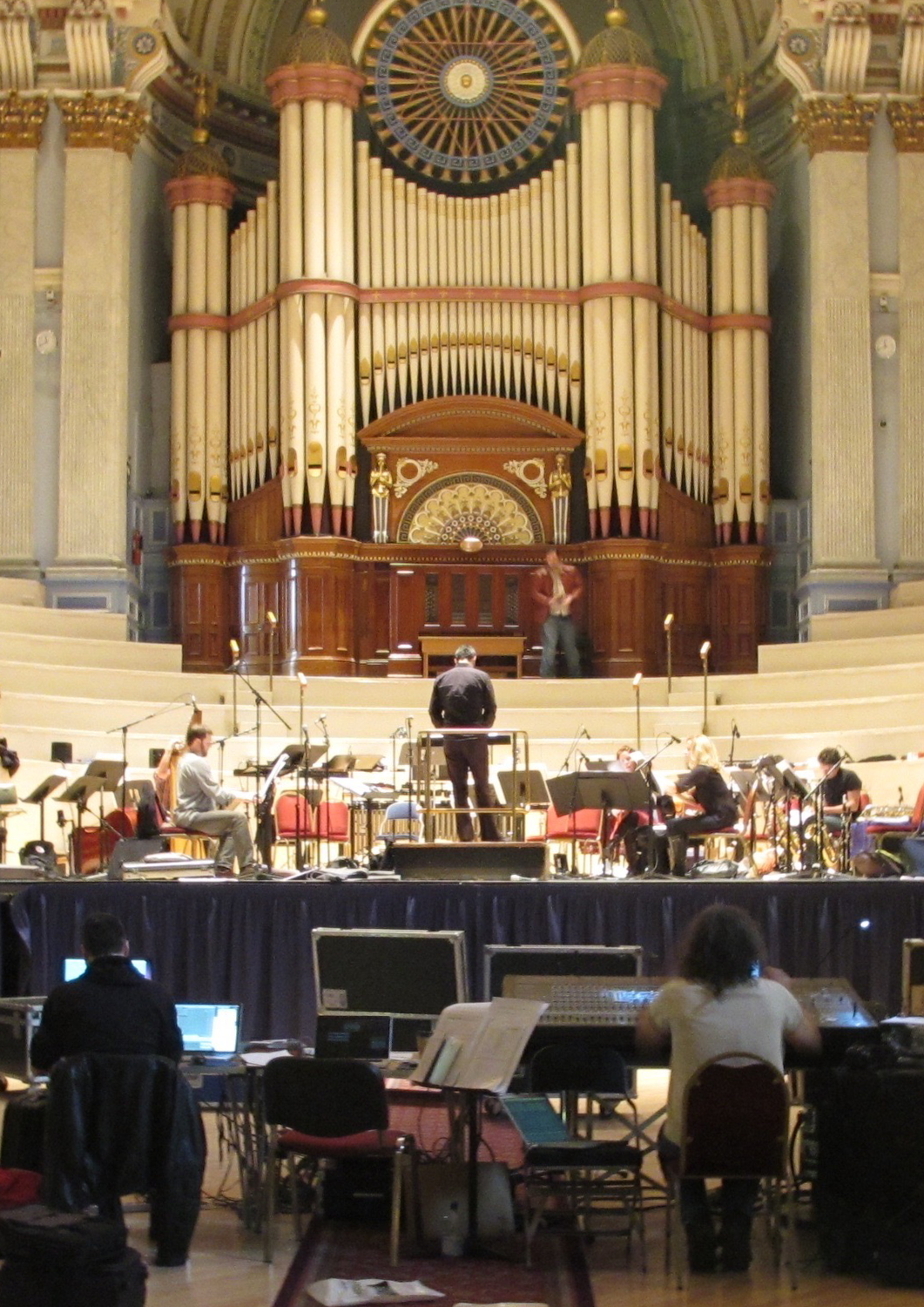
For detailed discussion, see:
Michael Hewes, dissertation “Conducting space: An analysis-based approach to spatial sound design in contemporary chamber music performance, 2013. Available on the RMIT Research Repository here.
Hewes’ PhD examination is here.
Richard Barret Music of Possibility, Vision Edition ISBN: 978-0-9931761-4-2
As creative practice research, the majority of project outputs were NTROs (Non-traditional research outputs), and included the following performances:
1. Codex IX – Brisbane, spatial direction of concert with ELISION Ensemble, 3 October 2008. Judith Wright Centre, Brisbane. A review can be read here.
2. Codex IX, Kings Place, London 7 June 2010 – spatial direction of concert with ELISION Ensemble
3. Codex IX Sendesaal, Bremen 10 June 2010 – spatial direction of concert with ELISION Ensemble
4. Codex IX – Melbourne, spatial direction of concert and live-to-air broadcast with Elision Ensemble, Iwaki Hall, and live to air broadcast on ABC Classic FM, 26 March, 2011
5. Construction –Richard Barrett, 19 November, 2011, Huddersfield Contemporary Music Festival and live-to-air broadcast on BBC3.
